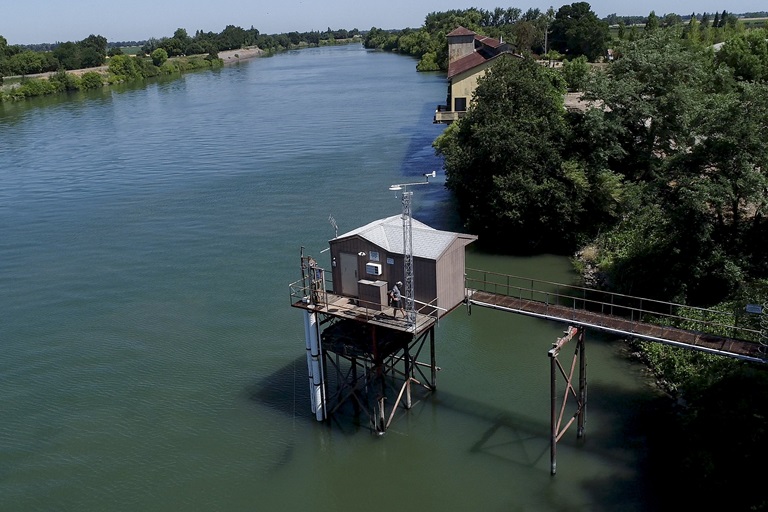How Sheds Help Ensure Healthy Water Quality for Millions of Californians
CEMP monitoring sites, resembling sheds, on the Sacramento-San Joaquin Delta house state-of-the-art water quality sampling and recording technology. DWR/2020
You may have noticed them on trips down the Sacramento-San Joaquin Delta, small buildings, just 10 feet by 12 feet, sticking up out of the water.
Resembling sheds that you typically see in a backyard; these buildings provide protection for something slightly more important than the family gardening tools and lawnmower. These buildings are part of the Department of Water Resources (DWR) Continuous Environmental Monitoring Program (CEMP) and house state-of-the-art water quality sampling and recording technology.
CEMP maintains a network of nine shore-based stations and six mid-channel stations.
“The data collected from these stations help DWR provide water quality monitoring that’s used to help manage water delivery to millions of Californians through the State Water Project and federal Central Valley Project,” said Scott Waller, section chief for the CEMP.
The Delta, as the hub of California’s water supply, delivers fresh water to two-thirds of the state’s population and millions of acres of farmland. The State Water Project (SWP) and federal, Central Valley Project (CVP) move water from the northern part of the state to the south, where more than 20 million Californians live.
“In order to move water through the SWP and CVP there are certain state and federal requirements we must meet when it comes to water quality and monitoring,” said Michael Dempsey, system technician for DWR. “Data collected from CEMP helps us inform managers and stakeholders on restoration, conservation, and management of the Delta.”
Real-time data is taken from monitoring stations every 15-minutes during a two-week period. The data recorded allows the CEMP to track changes in things like water temperature, air temperature, turbidity, salinity, and pH.
“The data is publicly posted in real-time every 15-minutes on the California Data Exchange Center website,” said Michelle Nelson, CEMP environmental scientist. “It’s also used by the Interagency Ecological Program, which is a collaboration of state and federal agencies that have been conducting investigations in the Delta since the 1970s.The data helps balance water delivery and maintaining a healthy Delta for native species and millions of Californians.”
So, on your next trip down the Delta, if you spot a building resembling your backyard shed, remember it’s helping DWR balance delivering water to millions of Californians and preserving and maintaining the health of our State’s water supply.
